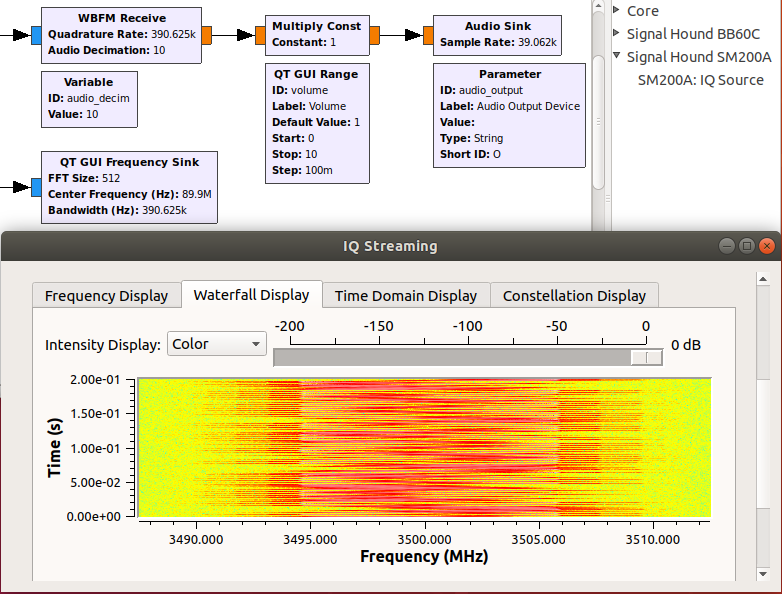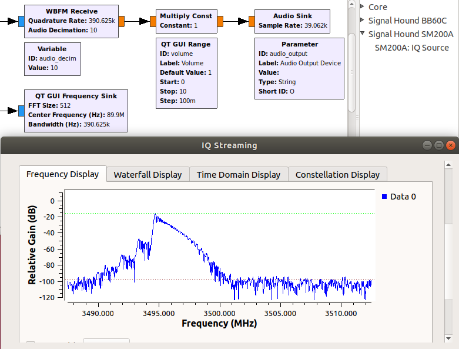What is GNU Radio?
GNU Radio is a free & open-source software development toolkit that provides signal processing blocks to implement software radios. It can be used with external RF hardware to create software-defined radios, or without hardware in a simulation-like environment. It is widely used in research, industry, academia, government, and hobbyist environments to support both wireless communications research and real-world radio systems.
How do Signal Hound analyzers work with GNU Radio?
Signal Hound offers GNU Radio modules for their BB60C and SM200A spectrum analyzers. This allows them to be used as I/Q sources from within GNU Radio, like blocks in a flowgraph, components of a hierarchical block or called from a script.

Roger Rush, the lead developer on the project, states that “Signal Hound and GNU Radio share a software-based approach to signal processing, and Signal Hound’s small form factor spectrum analyzers with their powerful APIs are a perfect fit for the creative GNU Radio ecosystem. For years, users of both products have been asking for integration – now it’s here.”
The Signal Hound BB60C and SM200A GNU Radio modules are available immediately on Signal Hound’s GitHub page. The downloads include a couple examples to help a user get up and running.

What, exactly, does GNU radio do, and how does it relate to Software Defined Radio (SDR)?
GNU Radio performs signal processing. You can use it to write applications to receive and transmit data with radio hardware or to create entirely simulation-based applications. GNU Radio has filters, channel codes, synchronization elements, equalizers, demodulators, vocoders, decoders, and many other types of blocks which are typically found in signal processing systems. More importantly, it includes a method of connecting these blocks and then manages how data is passed from one block to another. Extending GNU Radio is also quite easy; if you find a specific block that is missing, you can quickly create and add it.
GNU Radio applications can be written in either C++ or Python programming language, while the performance-critical signal processing path is implemented in C++ using processor floating-point extensions where available. This enables you to implement real-time, high-throughput radio systems in a simple-to-use, rapid-application-development environment (learn more at gnuradio.org).
Software-defined radio (SDR) is a radio communication system where components that have been traditionally implemented in hardware (e.g. mixers, filters, amplifiers, modulators/demodulators, detectors, etc.) are instead implemented by means of software on a personal computer or embedded system. While the concept of SDR is not new, the rapidly evolving capabilities of digital electronics render practical many processes which were once only theoretically possible.
A basic SDR system may consist of a personal computer equipped with a sound card, or other analog-to-digital converters, preceded by some form of RF front end. Significant amounts of signal processing are handed over to the general-purpose processor, rather than being done in special-purpose hardware. Such a design produces a radio which can receive and transmit widely different radio protocols based solely on the software used.
For a real-world look into some amazing SDR / GNURadio use, check out this video with Balint Seeber, Hacking the Wireless World with Software Defined Radio – 2.0… it’s one of our favorites.